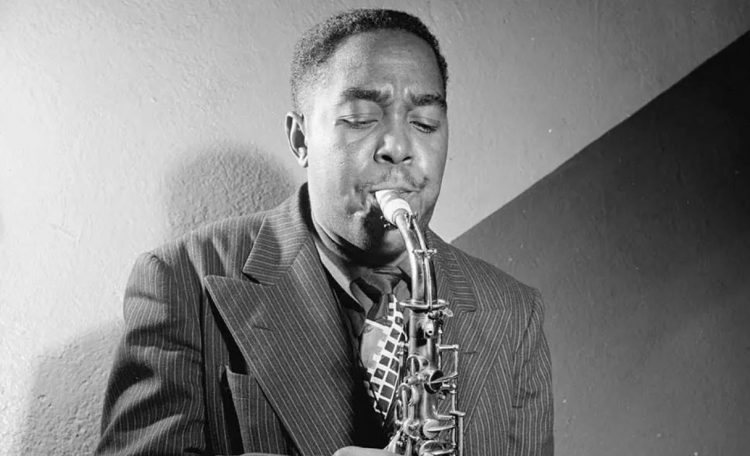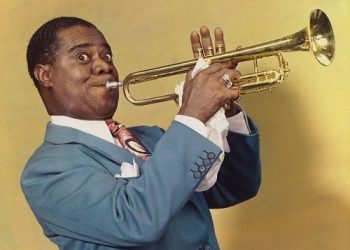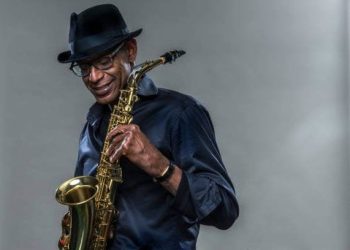The saxophone is an iconic musical instrument known for its distinct sound and versatility. Its popularity has led to the emergence of many talented saxophonists throughout history, whose contributions to the music industry have been immense. From jazz to classical and beyond, the saxophone has found a place in every genre of music. In this article, we’ll take a closer look at the top 20 famous saxophone players who have left an indelible mark on the music world. These musicians come from different eras, backgrounds, and genres, but they all share a passion for their craft and an unparalleled ability to express themselves through their music. We’ll delve into their lives, careers, and notable works, and explore what makes them stand out from the rest. Whether you’re a saxophone enthusiast or simply curious about the history of music, this list will introduce you to some of the most remarkable saxophonists of all time. Get ready to immerse yourself in the world of saxophone and discover the extraordinary talents of these legendary musicians.
1. Adolphe Sax
Adolphe Sax was a Belgian instrument maker and musician who is credited with inventing the saxophone. Born in Dinant, Belgium in 1814, Sax came from a family of instrument makers and began making his own instruments at a young age. He went on to create a wide range of brass and woodwind instruments, including the saxophone, which he patented in 1846. The saxophone quickly gained popularity and became a staple in jazz and classical music. Sax also made significant contributions to other areas of instrument making, such as the design of the modern French horn. He was known for his innovative designs and attention to detail, and his instruments are still highly regarded today. Sax’s legacy lives on in the many musicians who continue to play his instruments and the countless recordings that feature the saxophone.
2. John Coltrane
John Coltrane was an American jazz saxophonist and composer who is widely regarded as one of the most influential musicians of the 20th century. Born in Hamlet, North Carolina in 1926, Coltrane began playing saxophone in his teens and went on to study at the Granoff School of Music in Philadelphia. He played with a number of prominent jazz musicians throughout the 1940s and 1950s, including Dizzy Gillespie and Thelonious Monk. Coltrane’s unique style of playing, characterized by his rapid and complex improvisations, helped to define the sound of bebop and free jazz. He is best known for his albums “Giant Steps” and “A Love Supreme,” which are considered classics of the jazz genre. Coltrane’s influence can be heard in the work of countless jazz musicians who came after him, and his legacy continues to inspire new generations of musicians today.
3. Charlie Parker
Charlie Parker, also known as “Bird,” was an American jazz saxophonist and composer who played a major role in the development of bebop. Born in Kansas City, Kansas in 1920, Parker began playing saxophone as a teenager and went on to become one of the most influential musicians of the 20th century. Parker’s virtuosic style of playing, characterized by his lightning-fast improvisations and intricate melodies, helped to redefine jazz and inspire a new generation of musicians. He is best known for his recordings with trumpeter Dizzy Gillespie, including “Salt Peanuts” and “A Night in Tunisia.” Parker’s influence can be heard in the work of countless jazz musicians who came after him, and his legacy continues to inspire new generations of musicians today.
4. Candy Dulfer
Candy Dulfer is a Dutch jazz saxophonist who has achieved international fame for her funky, groove-based playing style. Born in Amsterdam in 1969, Dulfer began playing saxophone at a young age and quickly established herself as a rising star in the Dutch jazz scene. She gained widespread recognition in the 1990s with her hit single “Lily Was Here,” which featured a collaboration with British musician Dave Stewart of Eurythmics fame. Dulfer’s music blends elements of jazz, funk, and pop, and she has collaborated with a wide range of artists throughout her career, including Prince, Van Morrison, and Maceo Parker. Known for her energetic live performances and distinctive sound, Dulfer continues to push the boundaries of contemporary jazz and inspire new generations of musicians.
5. Sonny Rollins
Sonny Rollins is an American jazz saxophonist and composer who is widely regarded as one of the greatest improvisers in the history of jazz. Born in New York City in 1930, Rollins began playing saxophone as a teenager and quickly made a name for himself in the bebop scene. He went on to become one of the most influential jazz musicians of the 20th century, with a style characterized by his rhythmic drive, inventive melodies, and masterful improvisations. Rollins has recorded dozens of albums over the course of his career, including the acclaimed “Saxophone Colossus” and “The Bridge.” He is known for his fearless approach to improvisation and his willingness to experiment with new sounds and ideas, making him a key figure in the evolution of jazz. Rollins continues to perform and record today, and his legacy as one of the greatest saxophonists in the history of jazz remains secure.
6. Stan Getz
Stan Getz was an American jazz saxophonist known for his warm, lyrical sound and his contributions to the development of bossa nova music. Born in Philadelphia in 1927, Getz began playing saxophone as a teenager and went on to become one of the most successful and influential jazz musicians of the 20th century. He is best known for his recordings with pianist and composer João Gilberto, including the iconic album “Getz/Gilberto,” which features the hit song “The Girl from Ipanema.” Getz’s distinctive sound and elegant playing style have inspired countless musicians, and his legacy as one of the greatest saxophonists in the history of jazz remains secure.
7. Lester Young
Lester Young, also known as “Prez,” was an American jazz saxophonist known for his cool, laid-back style of playing. Born in Woodville, Mississippi in 1909, Young began playing saxophone as a teenager and went on to become one of the most influential jazz musicians of the 20th century. He played with a number of prominent jazz musicians throughout his career, including Count Basie and Billie Holiday. Young’s playing style, characterized by his smooth phrasing and use of space, helped to define the sound of the swing era and influence the development of bebop. He is best known for his recordings with Holiday, including the iconic song “Strange Fruit.” Young’s influence can be heard in the work of countless jazz musicians who came after him, and his legacy as one of the greatest saxophonists in the history of jazz remains secure.
8. Ornette Coleman
Ornette Coleman was an American jazz saxophonist and composer known for his pioneering work in the free jazz movement. Born in Fort Worth, Texas in 1930, Coleman began playing saxophone as a teenager and went on to develop a unique style of playing that challenged the conventions of traditional jazz. His recordings with his group, the Ornette Coleman Quartet, including “The Shape of Jazz to Come” and “Free Jazz,” helped to establish free jazz as a new and important subgenre of jazz. Coleman’s playing style, characterized by his use of atonality and unconventional phrasing, was highly influential and controversial, and his music remains an important part of the jazz canon. He continued to perform and record throughout his life, winning numerous awards and accolades for his contributions to the world of jazz.
9. Wayne Shorter
Wayne Shorter is an American jazz saxophonist and composer who has had a significant impact on the development of jazz music. Born in Newark, New Jersey in 1933, Shorter began his career in the 1950s playing with Art Blakey’s Jazz Messengers and later with Miles Davis’ quintet. He is known for his distinctive playing style and innovative compositions, which blend elements of modal jazz, fusion, and avant-garde. Shorter’s compositions, such as “Footprints” and “JuJu,” have become jazz standards and have been recorded by countless musicians. He has won numerous awards and accolades for his contributions to the world of jazz, including multiple Grammy Awards and induction into the DownBeat Jazz Hall of Fame.
10. Grover Washington, Jr.
Grover Washington Jr. was an American jazz saxophonist known for his smooth, soulful playing style. Born in Buffalo, New York in 1943, Washington began playing saxophone as a teenager and went on to become one of the most successful and influential jazz musicians of the 20th century. He is best known for his recordings of popular songs such as “Just the Two of Us” and “Mr. Magic,” which helped to bring jazz to a wider audience. Washington’s distinctive sound and melodic playing style have inspired countless musicians, and his legacy as one of the greatest saxophonists in the history of jazz remains secure.
11. Cannonball Adderley
Cannonball Adderley was an American jazz saxophonist known for his soulful playing style and his contributions to the development of hard bop music. Born in Tampa, Florida in 1928, Adderley began playing saxophone as a teenager and went on to become one of the most influential jazz musicians of the 20th century. He played with a number of prominent jazz musicians throughout his career, including Miles Davis and John Coltrane. Adderley’s playing style, characterized by his bluesy phrasing and use of soulful melodies, helped to define the sound of hard bop and influence the development of soul jazz. He is best known for his recordings with his own group, the Cannonball Adderley Quintet, including the hit song “Mercy, Mercy, Mercy.” Adderley’s influence can be heard in the work of countless jazz musicians who came after him, and his legacy as one of the greatest saxophonists in the history of jazz remains secure.
12. Coleman Hawkins
Coleman Hawkins was an American jazz saxophonist who is widely considered to be one of the greatest and most influential jazz musicians of all time. Born in St. Joseph, Missouri in 1904, Hawkins began his career in the 1920s and went on to become a major figure in the development of the swing and bebop styles of jazz. He is best known for his recordings of jazz standards such as “Body and Soul” and “I Can’t Get Started,” which remain some of the most influential and beloved recordings in the history of jazz. Hawkins’ influence can be heard in the work of countless jazz musicians who came after him, and his legacy as one of the greatest saxophonists in the history of jazz remains secure.
13. Sidney Bechet
Sidney Bechet was an American jazz clarinetist and saxophonist who is widely considered to be one of the greatest and most influential jazz musicians of all time. Born in New Orleans in 1897, Bechet began his career in the early 1900s and went on to become a major figure in the development of the New Orleans jazz style. He is best known for his recordings of jazz standards such as “Summertime” and “St. Louis Blues,” which remain some of the most influential and beloved recordings in the history of jazz. Bechet’s influence can be heard in the work of countless jazz musicians who came after him, and his legacy as one of the greatest clarinetists and saxophonists in the history of jazz remains secure.
14. Paul Desmond
Paul Desmond was an American jazz saxophonist best known for his work as a member of the Dave Brubeck Quartet. Born in San Francisco in 1924, Desmond began his career in the 1940s and went on to become one of the most influential and beloved jazz saxophonists of the 20th century. He is best known for his recordings with the Dave Brubeck Quartet, including the hit song “Take Five,” which helped to popularize jazz music and bring it to a wider audience. Desmond’s playing style, characterized by his smooth tone and melodic improvisations, has inspired countless jazz musicians, and his legacy as one of the greatest saxophonists in the history of jazz remains secure.
15. Gerry Mulligan
Gerry Mulligan was an American jazz saxophonist and composer known for his work in the cool jazz and West Coast jazz styles. Born in New York City in 1927, Mulligan began his career in the 1940s and went on to become one of the most influential jazz musicians of the 20th century. He is best known for his recordings with the Gerry Mulligan Quartet and the Chet Baker Quartet, including the hit song “My Funny Valentine.” Mulligan’s playing style, characterized by his melodic improvisations and his use of the baritone saxophone, has inspired countless jazz musicians, and his legacy as one of the greatest saxophonists and composers in the history of jazz remains secure.
16. Melissa Aldana
Melissa Aldana is a Chilean jazz saxophonist who has been hailed as one of the most exciting and innovative young jazz musicians of her generation. Born in 1988, Aldana grew up in a family of jazz musicians and began playing the saxophone at an early age. She went on to study jazz at the Berklee College of Music and has since released several critically acclaimed albums, including her 2014 release “Melissa Aldana & Crash Trio.” Aldana’s playing style is characterized by her virtuosic technique and her ability to seamlessly blend traditional jazz forms with more modern elements. Her work has earned her numerous awards and accolades, including the prestigious Thelonious Monk International Jazz Saxophone Competition in 2013.
17. Ben Webster
Ben Webster was an American jazz saxophonist who is widely considered to be one of the greatest and most influential tenor saxophonists in the history of jazz. Born in Kansas City, Missouri in 1909, Webster began his career in the 1930s and went on to become a major figure in the development of the swing and bebop styles of jazz. He is best known for his recordings with the Duke Ellington Orchestra, including the hit song “Cotton Tail,” as well as his own recordings, including “Soulville” and “Gone with the Wind.” Webster’s playing style, characterized by his rich, soulful tone and his lyrical improvisations, has inspired countless jazz musicians, and his legacy as one of the greatest tenor saxophonists in the history of jazz remains secure.
18. Michael Brecker
Michael Brecker was an American jazz saxophonist who is widely considered to be one of the most influential and innovative tenor saxophonists of the late 20th century. Born in 1949 in Philadelphia, Pennsylvania, Brecker began his career as a studio musician in the 1970s and went on to become a major figure in the development of jazz fusion and contemporary jazz. He is best known for his work with the jazz fusion group Weather Report, as well as his own recordings, including his critically acclaimed album “Tales from the Hudson.” Brecker’s playing style, characterized by his virtuosic technique and his ability to seamlessly blend traditional jazz forms with more modern elements, has inspired countless jazz musicians, and his legacy as one of the greatest tenor saxophonists in the history of jazz remains secure.
19. Amy Dickson
Amy Dickson is an Australian classical and jazz saxophonist who has been hailed as one of the most exciting and innovative saxophonists of her generation. Born in 1982 in Sydney, Dickson began playing the saxophone at an early age and went on to study at the Royal Northern College of Music in Manchester, England. She has since released several critically acclaimed albums, including her 2013 release “Dusk & Dawn,” which features a blend of classical and jazz works. Dickson’s playing style is characterized by her virtuosic technique and her ability to seamlessly blend classical and jazz forms, and her work has earned her numerous awards and accolades, including the Classical BRIT Awards “Breakthrough Artist of the Year” in 2013.
20. Art Pepper
Art Pepper was an American jazz saxophonist who is widely considered to be one of the greatest alto saxophonists in the history of jazz. Born in Gardena, California in 1925, Pepper began his career in the 1940s and went on to become a major figure in the development of the West Coast jazz style. He is best known for his recordings with the Stan Kenton Orchestra, as well as his own recordings, including “Meets the Rhythm Section” and “Art Pepper + Eleven.” Pepper’s playing style, characterized by his intense emotional expression and his ability to seamlessly blend traditional jazz forms with more modern elements, has inspired countless jazz musicians, and his legacy as one of the greatest alto saxophonists in the history of jazz remains secure.










